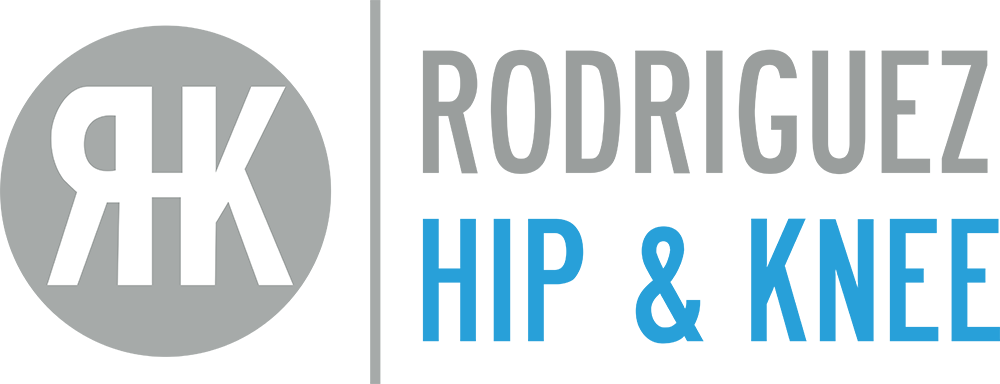Common Elective Procedures
Dr. Rodriguez-Elizalde currently does his hip replacements via the Direct Anterior (DA) technique. The DA has gained significant popularity in the US, and some centers in Canada as a preferred method of hip replacement.
The DA technique involves operating from the front end of the thigh to reach the hip joint. Traditionally, surgeons used the side (lateral) or back (posterior) approach, which involves the cutting and reattaching of the tendons and muscles to reach the hip.
Total Knee Replacement (TKR) or Total Knee Arthroplasty (TKA), is the most common joint replacement surgery performed in Canada today. It is primarily performed when the knee joint is damaged, stiff and painful, usually as a result of arthritis.
Unicondylar Knee Replacement (UKR) or Unicondylar Knee Arthroplasty (UKA), can be an alternative to Total, or “full” knee replacement. It is performed when half the knee joint is damaged, but the other half is still in good condition.
Revision Hip Arthroplasty or Revision Hip Replacement involves removing previously placed components or prothesis, and replanting a new device. This surgery is usually more complicated than a first time hip replacement, and can involve the removal of the acetabular component (cup), plastic liner, the femoral component (stem), or all three. Reasons for revision hip surgery include pain, instability, loosening over time, infection or fracture.
Revision Knee Arthroplasty or Revision Knee Replacement involves removing previously placed components or prosthesis, and replanting a new device. This surgery is usually more complicated than a first time knee replacement, and can involve the removal of the femoral component (thigh bone cap), plastic liner, the tibial component (shin bone cap), patellar component (knee cap piece), or all four. Reasons for revision hip surgery include pain, instability, loosening over time, infection or fracture.
Trauma Surgery involves the fixing of bone fractures in an acute (emergency) situation. Typically, these surgeries involve stabilizing the bones with specialized orthopedic plates, screws or nails, but it can also involve the repair of torn tendons and ligaments. The after care for fractures often involves the application of specialized splints or casts which may need to be changed at set intervals.
PRP (Platelet Rich Plasma) injection therapy is a form of biologic treatment using a patient’s own body (concentrated blood sample) to minimize joint pain and inflammation, as well as enhance healing and recovery. It involves taking a patient’s blood (60-120mL via a venous draw) and using a specialized centrifuge to isolate the layer rich in platelets. This concentrated sample is then injected into the treatment site under ultrasound guidance.
BMAC (Bone Marrow Aspirate Concentrate) is a form of biologic treatment using a patient’s own body (concentrated bone marrow sample) to minimize joint pain and inflammation, as well as enhance healing and recovery. It is more involved than PRP, as the harvest site for bone marrow is the posterior superior iliac spine (back of pelvic bone). After local anesthetic, a specialized needle is inserted onto the pelvis and bone marrow is aspirated. This is concentrated using a specialized centrifuge to isolate the layer rich in bone marrow and stem cells. This concentrated sample is then injected into the treatment site under ultrasound guidance.
Sebastian is an Orthopedic Trauma and Adult Hip and Knee
surgeon at Humber Hospital, in Toronto, with a special
interest in revision and complex cases.
He
completed his orthopedic surgery residency at the
University of Ottawa, after which he was accepted for
Fellowship training at the Hospital for Special Surgery
in New York, in Hip and Knee Arthroplasty.
